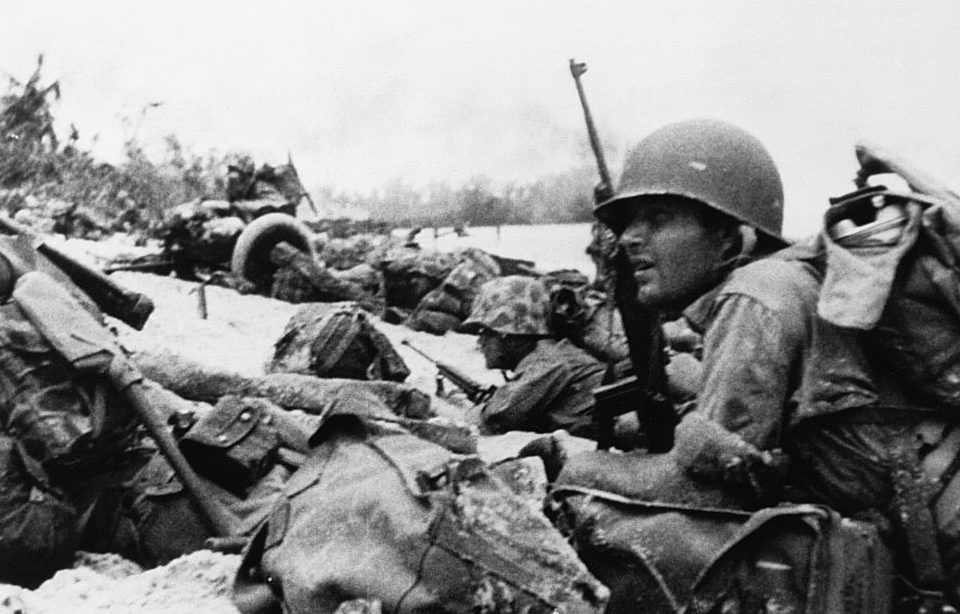The Imperial Japanese Army and Navy were known for their rigidity and resistance to change. Owing to the terrain of the land, however, their service members took a different direction during the Battle of Peleliu, in the Pacific Theater. For that reason, it was one of the most devastating battles the United States military fought during World War II.
Peleliu was a strategically important location
The US military saw great success in the Pacific Theater. Along with taking the Marshall Islands and Guam, troops had also been able to secure Tinian and Saipan.
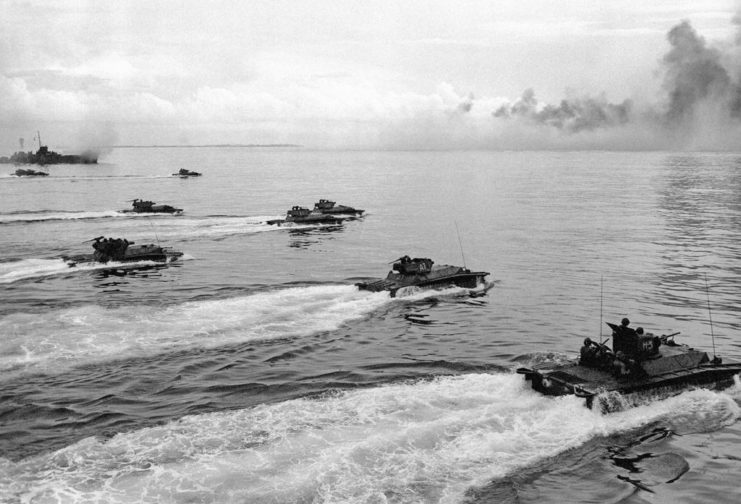
Admiral Chester Nimitz, commander-in-chief of the Pacific Fleet, wanted to next take control of the Palau Islands. However, he felt this would be difficult without first securing the volcanic island of Peleliu. It featured an airstrip the Japanese could use to threaten future US amphibious missions, as well as a garrison of 10,000 troops.
The Japanese change their strategy
Due to their success over the past year, military officials felt the fight on Peleliu would be no different and tagged the 1st Marine Division to lead the assault. This included the 1st Marine Regiment, commanded by Chesty Puller. Maj. Gen. William Rupertus predicted they’d be able to take the island within four days.
The strategy for Peleliu was the same they’d been working with for months: a massive bombardment of land-based targets using naval ships, followed by waves of troops who would then push inland.
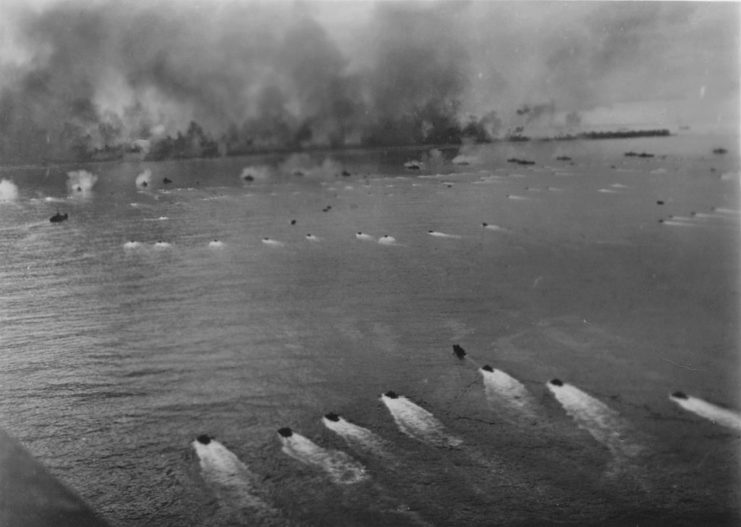
After significant losses, the Japanese began paying attention to the Americans’ strategy and developed ways to combat it. By 1944, Peleliu was occupied by an estimated 11,000 soldiers with the 14th Infantry Division, which knew the terrain particularly well, and the plan was to use that to their advantage.
The impending battle would allow them to test out their new strategy. The result would prove costly for the US forces.
A much longer battle than anticipated
The Americans bombarded the island before troops approached. Peleliu, however, had a large network of caves and tunnels, which allowed Japanese soldiers to come out relatively unscathed. They didn’t emerge from the caves for four days, giving the Marines a false sense of security.
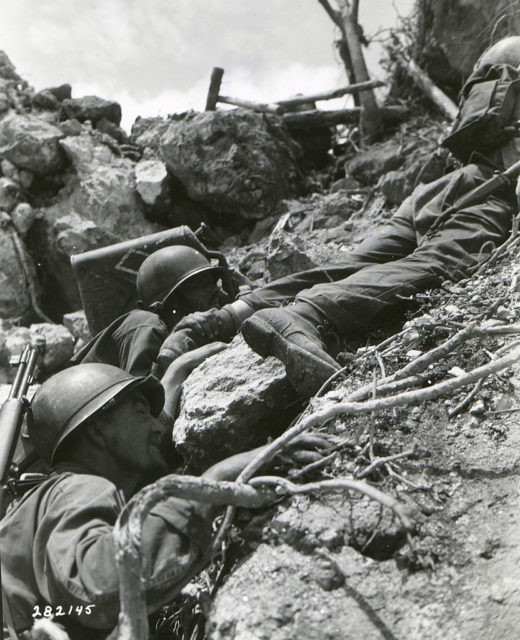
The Japanese defenses were designed by Col. Kunio Nakagawa, commander of 2nd Regiment, 14th Infantry Division. Nakagawa switched from the “banzai charge” method of rushing their opponent. Instead, he centered the Japanese defenses at the peak of Umurbrogol Mountain. It had over 500 limestone caves, connected by tunnels.
As the US forces approached, the well-fortified Japanese fired on them with mortars and anti-aircraft cannons, destroying 60 tracked amphibious vehicles (LVT) and DUKWs. Rather than taking a handful of days, the battle stretched into weeks.
US Marines push forward up the hill
While the Japanese had dramatically changed their tactics, the Americans did not. The Marines had thought their bombardment was successful and didn’t realize the enemy had been hiding out. They continued to push forward and, as a result, began to suffer massive casualties.
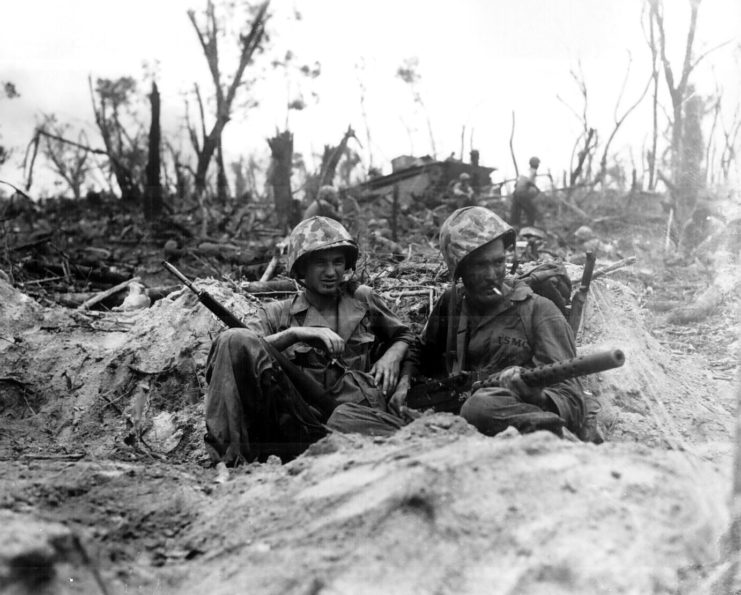
The fiercest fighting occurred on what the Marines named Bloody Nose Ridge. As they slowly made their ascent up the mountain, the Japanese utilized brutal tactics to ensure mass casualties, including snipers firing at those attempting to carry away the injured, knowing they would have to be replaced.
Casualty rates were very high for the Marines, with some battalions suffering 50 percent casualty rates or higher.
The Marines learn important lessons
After over two months of fighting, the American forces were able to secure Peleliu. The casualty numbers, however, were disasterous. Of the 28,000 Marines and infantrymen who took part, 40 percent were injured or killed – 8,000 wounded and 1,800 dead.
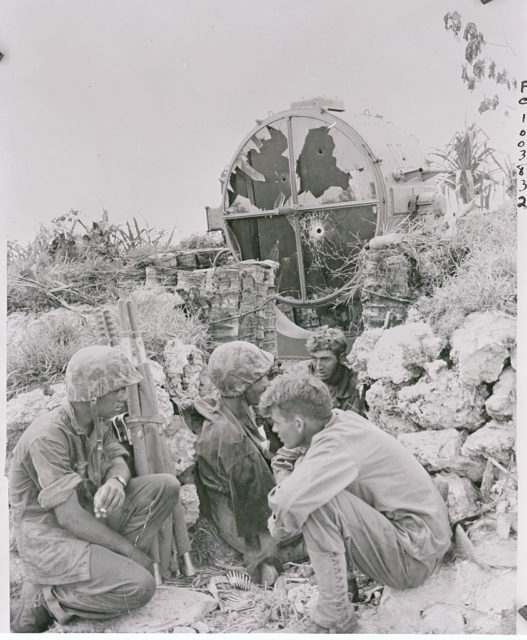
Want War History Online‘s content sent directly to your inbox? Sign up for our newsletter here!
US leaders were able to learn from their mistakes following the battle. They knew they’d been overconfident about their bombardment strategy, and realized they should have had a better understanding of the terrain before making an approach. These lessons served them well in future victories on both Iwo Jima and Okinawa.
